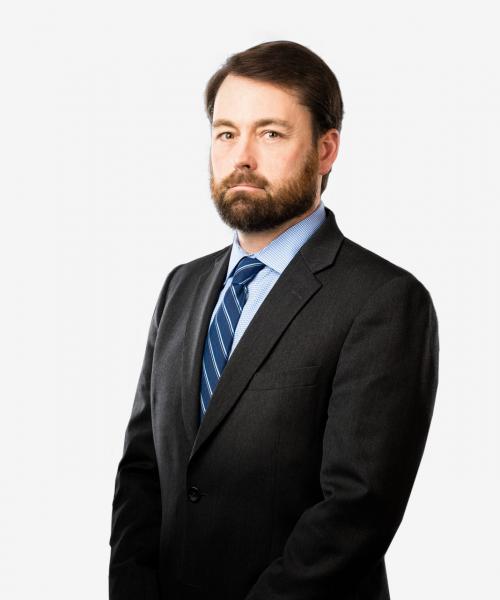New York’s Highest Court Requires Insureds to Pay for Pollution Losses for Periods That Insurance Was Unavailable in the Industry
KeySpan Gas East Corp. v. Munich Reinsurance America, Inc., No. 20, 2018 WL 1472635 (N.Y. Mar. 27, 2018). Under the “unavailability exception,” a policyholder bears the risk for periods of time when it elected not to purchase available insurance, but not for those years when insurance was unavailable in the industry. Consistent with the approach that it has previously taken in addressing coverage issues arising from long-tail environmental loss insurance claims – see Consolidated Edison Co. of N.Y., Inc. v. Allstate Ins. Co., 98 N.Y.2d 208 (2002), and In the Matter of Viking Pump, Inc., 27 N.Y.3d 244 (2016) – the Court held that the language of the insurance policies required the insureds, and not the insurers, to be liable for such losses under the pro rata allocation approach.
In KeySpan, the liability underlying the insurance dispute emanated from environmental contamination caused by manufactured gas plants owned and operated by KeySpan Gas East Corporation’s predecessor, Long Island Lighting Company, in Rockaway Park and Hempstead, New York (the sites), beginning in the late 1800s and ceasing decades later. The New York Department of Environmental Conservation required KeySpan to remediate the sites, where contaminants (such as tar) had leeched into groundwater gradually and continuously over a number of years.
Between 1953 and 1969, Century Indemnity Company issued 8 excess liability policies to LILCO covering property damage. Pollution property damage insurance was not available to utilities until approximately 1925, and the “sudden and accidental” pollution exclusion was later generally adopted by the insurance industry in late 1970.
KeySpan sued Century and other insurers seeking a declaration of coverage and determination of liability under its insurance policies. Century moved for partial summary judgment, declaring that it was not liable for any portion of the property damage at the sites that had occurred outside of its policy periods, and that covered costs should be allocated pro rata over the entire period during which property damage at each site occurred. KeySpan did not dispute the pro rata allocation approach, but argued that proration should not occur for liability for periods that pollution liability insurance were unavailable (i.e., before 1925, and after October 1970 when the pollution exclusion was implemented). This was an issue of first impression for the New York Court of Appeals.
The Court noted that when using pro rata time-on-the-risk allocation, a number of other jurisdictions have declined to place the policyholder on the risk if insurance was unavailable in the industry – known as the “unavailability exception” to the general rule that the insured will be liable for risk periods when it could have purchased insurance to cover the risk but chose not to do so. The Court, consistent with its prior opinions addressing long-tail environmental insurance loss disputes, concluded that the “unavailability exception” to the general rule is inconsistent with New York’s insurance principles:
It follows from our holding in Consolidated Edison that the unavailability rule is inconsistent with the contract language that provides the foundation for the pro rata approach—namely, the “during the policy period” limitation—and that to allocate risk to the insurer for years outside the policy period would be to ignore the very premise underlying pro rata allocation (id.). Indeed, such an approach could, once a policy is triggered, impose liability in perpetuity (or retroactively to periods prior to coverage) on an insurer who issued insurance coverage for only a limited number of years, thereby eviscerating much of the distinction between pro rata and all sums allocation. In the context of continuous harms, where the contamination attributable to each policy period cannot be proven and we draw from the contract language to distribute the harm pro rata across the policy periods, it would be incongruous to include harm attributable to years of non-coverage within the policy periods. KeySpan, 2018 WL 1472635, at *4.
The Court further noted that the unavailability rule would impose liability on insurers for periods of time and risk for which they were not paid premium, and in violation of the principle that insurers are free to select and exclude certain risks. Id. (citing Vander Veer v. Continental Cas. Co., 34 N.Y.2d 50, 52 (1974)). In addition, the unavailability rule would contravene the reasonable expectations of the average insured, who would not expect to receive coverage without regard to the number of years for which it purchased applicable insurance. Id. (citing Cragg v. Allstate Indem. Corp., 17 N.Y.3d 118, 122 (2011)).
KeySpan argued that it would be inequitable to allocate the risk to the policyholder for years that coverage was unavailable. But the Court reiterated that it “may not make or vary the contract of insurance to accomplish notions of abstract justice or moral obligation.” Id., at *5 (quoting Breed v. Ins. Co. of N. Am., 46 N.Y.2d 351, 355 (1978)). In any event, “[t]he policyholder is the one who allegedly caused the injury and, therefore, who ultimately will be financially responsible should insurance prove insufficient.” Id. (internal quotation marks and citation omitted).
Accordingly, “because the very essence of pro rata allocation is that the insurance policy language limits indemnification to losses and occurrences during the policy period, the unavailability rule cannot be reconciled with the pro rata approach.” Id. (internal quotation marks and citations omitted).
Contacts
- Related Industries
-
Read Time
6Minutes

